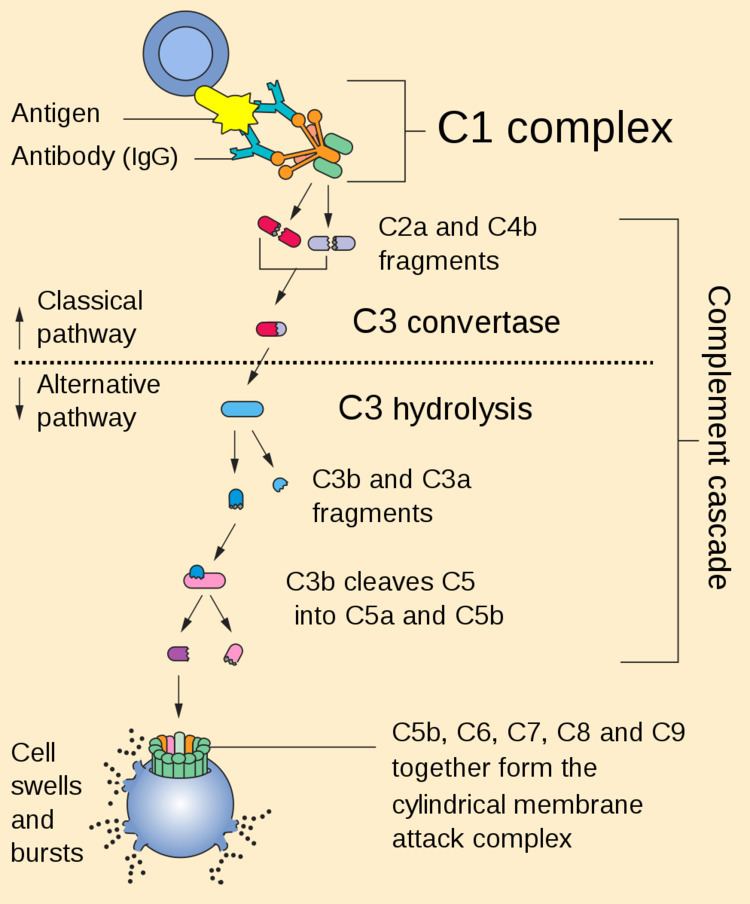Symbol C1QA HUGO 1241 RefSeq NM_015991 | Entrez 712 OMIM 120550 UniProt P02745 | |
 | ||
The C1q complex is a protein complex. It is part of the complement system.
Contents
It is potentially multivalent for attachment to the complement fixation sites of immunoglobulin. The sites are on the CH2 domain of IgG and, it is thought, on the CH4 domain of IgM.
The appropriate peptide sequence of the complement fixing site might become exposed following complexing of the immunoglobulin, or the sites might always be available, but might require multiple attachment by C1q with critical geometry in order to achieve the necessary avidity.
Structure
C1q is a 400 kDa protein formed from 18 peptide chains in 3 subunits of 6. Each 6 peptide subunit consists of a Y-shaped pair of triple peptide helices joined at the stem and ending in a globular non-helical head.
The 80-amino acid helical component of each triple peptide contain many Gly-X-Y sequences, where X and Y are proline, isoleucine, or hydroxylysine; they, therefore, strongly resemble collagen fibrils.
C1QA, C1QB, C1QC
C1q is composed of 18 polypeptide chains: six A-chains, six B-chains, and six C-chains. Each chain contains a collagen-like region located near the N terminus and a C-terminal globular region. The A-, B-, and C-chains are arranged in the order A-C-B on chromosome 1. This gene encodes the A-chain polypeptide of human complement subcomponent C1q.
Function
It is assumed that the globular ends are the sites for multivalent attachment to the complement fixing sites in immune complexed immunoglobulin. Patients suffering from Lupus erythematosus often have deficient expression of C1q. Genetic deficiency of C1q is extremely rare (approximately 75 known cases) although the majority (>90%) of those suffer from SLE. C1q may also play a central role in the aging of cells.
C1q associates with C1r and C1s in order to yield the C1-complex, the first component of the serum complement system. Deficiency of C1q has been associated with lupus erythematosus and glomerulonephritis.
It is potentially multivalent for attachment to the complement fixation sites of immunoglobulin. The sites are on the CH2 domain of IgG and, it is thought, on the CH4 domain of IgM.
The appropriate peptide sequence of the complement fixing site might become exposed following complexing of the immunoglobulin, or the sites might always be available, but might require multiple attachment by C1q with critical geometry in order to achieve the necessary avidity.
